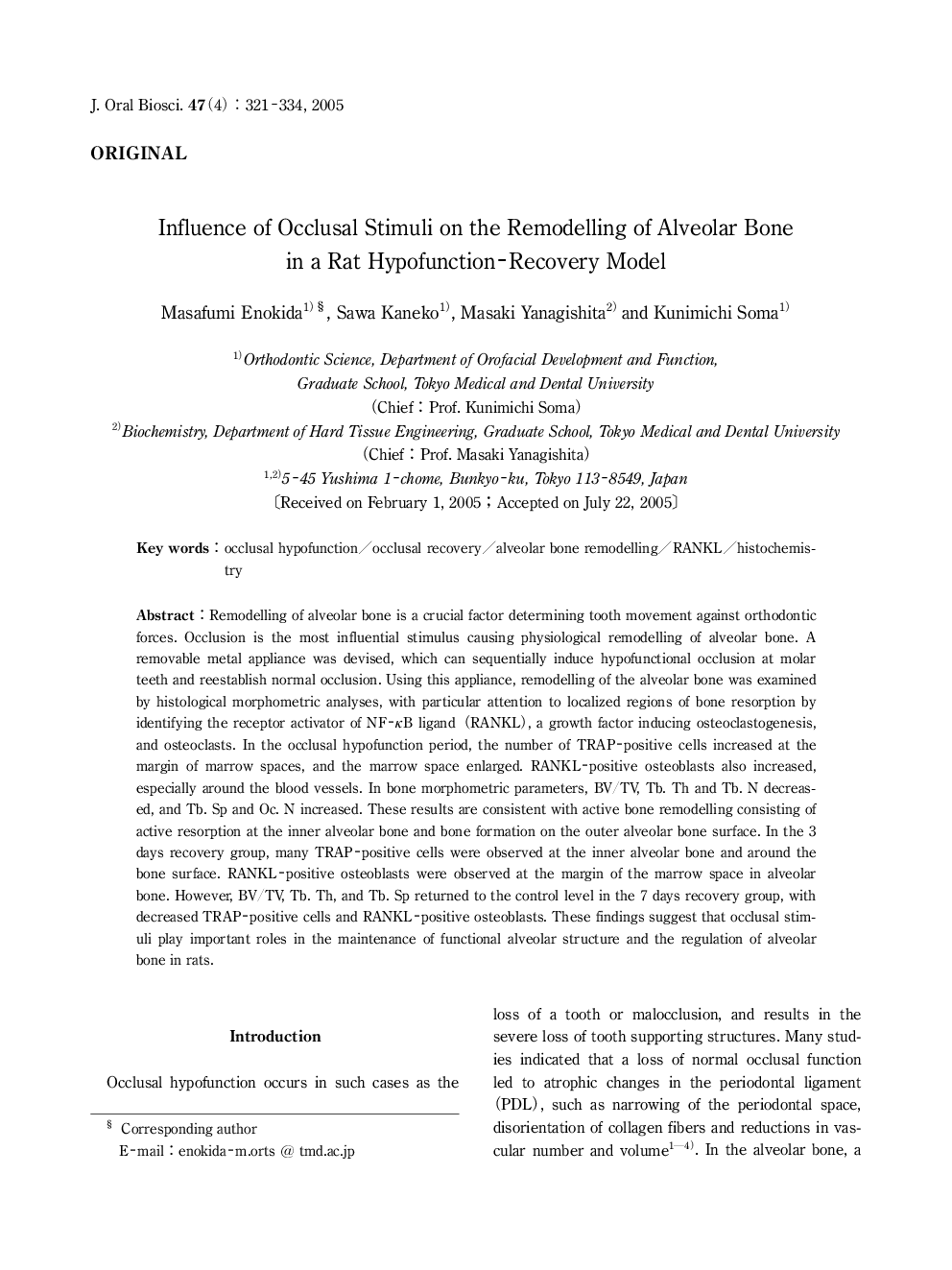| Article ID | Journal | Published Year | Pages | File Type |
|---|---|---|---|---|
| 9103364 | Journal of Oral Biosciences | 2005 | 14 Pages |
Abstract
Remodelling of alveolar bone is a crucial factor determining tooth movement against orthodontic forces. Occlusion is the most influential stimulus causing physiological remodelling of alveolar bone. A removable metal appliance was devised, which can sequentially induce hypofunctional occlusion at molar teeth and reestablish normal occlusion. Using this appliance, remodelling of the alveolar bone was examined by histological morphometric analyses, with particular attention to localized regions of bone resorption by identifying the receptor activator of NF-κB ligand (RANKL), a growth factor inducing osteoclastogenesis, and osteoclasts. In the occlusal hypofunction period, the number of TRAP-positive cells increased at the margin of marrow spaces, and the marrow space enlarged. RANKL-positive osteoblasts also increased, especially around the blood vessels. In bone morphometric parameters, BV/TV, Tb. Th and Tb. N decreased, and Tb. Sp and Oc. N increased. These results are consistent with active bone remodelling consisting of active resorption at the inner alveolar bone and bone formation on the outer alveolar bone surface. In the 3 days recovery group, many TRAP-positive cells were observed at the inner alveolar bone and around the bone surface. RANKL-positive osteoblasts were observed at the margin of the marrow space in alveolar bone. However, BV/TV, Tb. Th, and Tb. Sp returned to the control level in the 7 days recovery group, with decreased TRAP-positive cells and RANKL-positive osteoblasts. These findings suggest that occlusal stimuli play important roles in the maintenance of functional alveolar structure and the regulation of alveolar bone in rats.
Related Topics
Life Sciences
Biochemistry, Genetics and Molecular Biology
Clinical Biochemistry
Authors
Masafumi Enokida, Sawa Kaneko, Masaki (Chief: Prof.), Kunimichi (Chief: Prof.),
